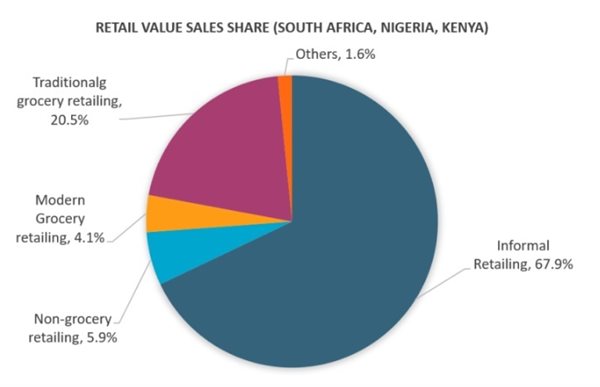
Related
Top stories


LegalNigeria to implement new tax laws from January despite calls for delay, Tinubu says
Camillus Eboh 31 Dec 2025


Marketing & MediaStranger Things extends record run as all 5 seasons dominate Netflix Top 10
29 Dec 2025


Retailing contributions to GDP across the region continue to increase, indicating that the region is consumption-driven. According to Euromonitor International, retail sales in the region amounted to over $500 billion in 2018. Key retailing markets include South Africa, Egypt, Morocco and Algeria.
Although Africa is regarded as an emerging market, it is a different and complex one. The region is home to 55 independents states, which are characterised by diverse economies, and consumption patterns. It hosts a population of different income groups, religions, races, customs and languages. Furthermore, different countries are at different development stages.
To develop a good and strategic market entry approach into the region, one needs to understand the diversity and dynamics that drive retailing. In addition, understanding how and where one’s product is consumed and purchased in the region is necessary for developing a route-to-market strategy.
Africa is made up of a combination of traditional and modern retailing channels. These channels vary by market and are influenced by factors such as economy, state of development, consumer preferences and local culture.

The region’s rising middle class is contributing to the modernisation of retailing, offering consumer market opportunities. Modern retailing channels include supermarkets, hypermarkets and forecourt that are growing in sequence with economic growth and urbanisation.
As a result, the region has witnessed the entry and expansion global retailers such as Walmart, Inditex, H&M and Carrefour. Retailers are responding to the changing economic conditions to build a captive consumer base and offset slow growth in traditional economies.
Many of these companies used market entry strategies such as licensing agreements, joint ventures, franchising and wholly-owned subsidiaries. Nonetheless, average modern retailing only accounts for 5% to 30% of the total retail landscape in the region. This proportion of formal retailing across the region indicates substantial investment and business opportunities. As such many countries continue to develop on the backdrop of rapid urbanisation and rising household incomes.
Although internet retailing in the region is still at its infancy by global standards, the on-going expansion and emergence of flexible payment methods in the region, is boosting internet retail sales. South Africa leads in this channel owing to better-developed infrastructure.
However, in other countries, innovative solutions coming to the fore overcome some of the barriers to online sales. The region has witnessed the emergence of home-grown payment solutions such as near-field communication (NFC) technology and mobile payments.
Despite the proliferation of modern retail channels in Africa, traditional and informal retailing dominates due to lack of infrastructure. Traditional channels include independent retailing channels such as small grocers and kiosks. When compared to modern retailers, these outlets offer convenience, flexible trading times, accessibility and lower-priced products.
Traditional channels such as Dukas in Kenya and spaza shops in South Africa have been molded to cater to the buying patterns, purchasing power and product preferences of consumers.
Many incomes in the region fluctuate so consumers adapt their purchasing decision to the economic environment. As a result, many informal and traditional retailers offer products that suit consumer’s low buying power. Consumers can buy single items or smaller quantities as opposed to buying complete packs at modern channels. Examples include loose cigarettes, stock cubes, single eggs, unpackaged rice and sugar.
Informal retailing is important and not going away anytime soon. A large proportion of retailing still takes place in open-air markets, street vendors and tabletop merchants. Informal retailing forms the backbone of unofficial national trading systems in many countries. For instance, in Nigeria, over 90% of the country’s retailing market is dominated by informal retailing.
In terms of product availability, many products sold through modern channels are also sold by informal channels. Sometimes, informal markets are hubs for illicit products. Although the perception is that only low-income consumers shop at informal markets, many middle-class consumers purchase from informal markets regularly.
Companies planning to enter the market cannot afford to only focus on modern retailing. Market entry strategies should consider both modern and traditional retailers where affordability is key in developing an African strategy.
There are significant variations in the logistics costs and lead times required to access different African markets. The region is characterised by a multitude of retail channels, distribution networks, supply chains, marketing strategies, and different regulatory administrations. Underdeveloped infrastructure and complex distribution channels make it challenging for companies and products to reach consumers.
Many consumer goods are imported from outside the region and thus demand an efficient supply chain. This comes with challenges such as volatile currency fluctuations and import duties. Partnering with local players that are connected along the value chain, coupled with creative, flexible approaches to supply chain and logistics can help companies overcome distribution challenges.
All these market dynamics indicate that the region’s retailing landscape is diverse and increasingly expanding to suit the changing consumer demographics. As getting it right can reap huge rewards, there is a need to understand the market´s complexity. For successful and sustained market entry, a more granular and regional approach is required.